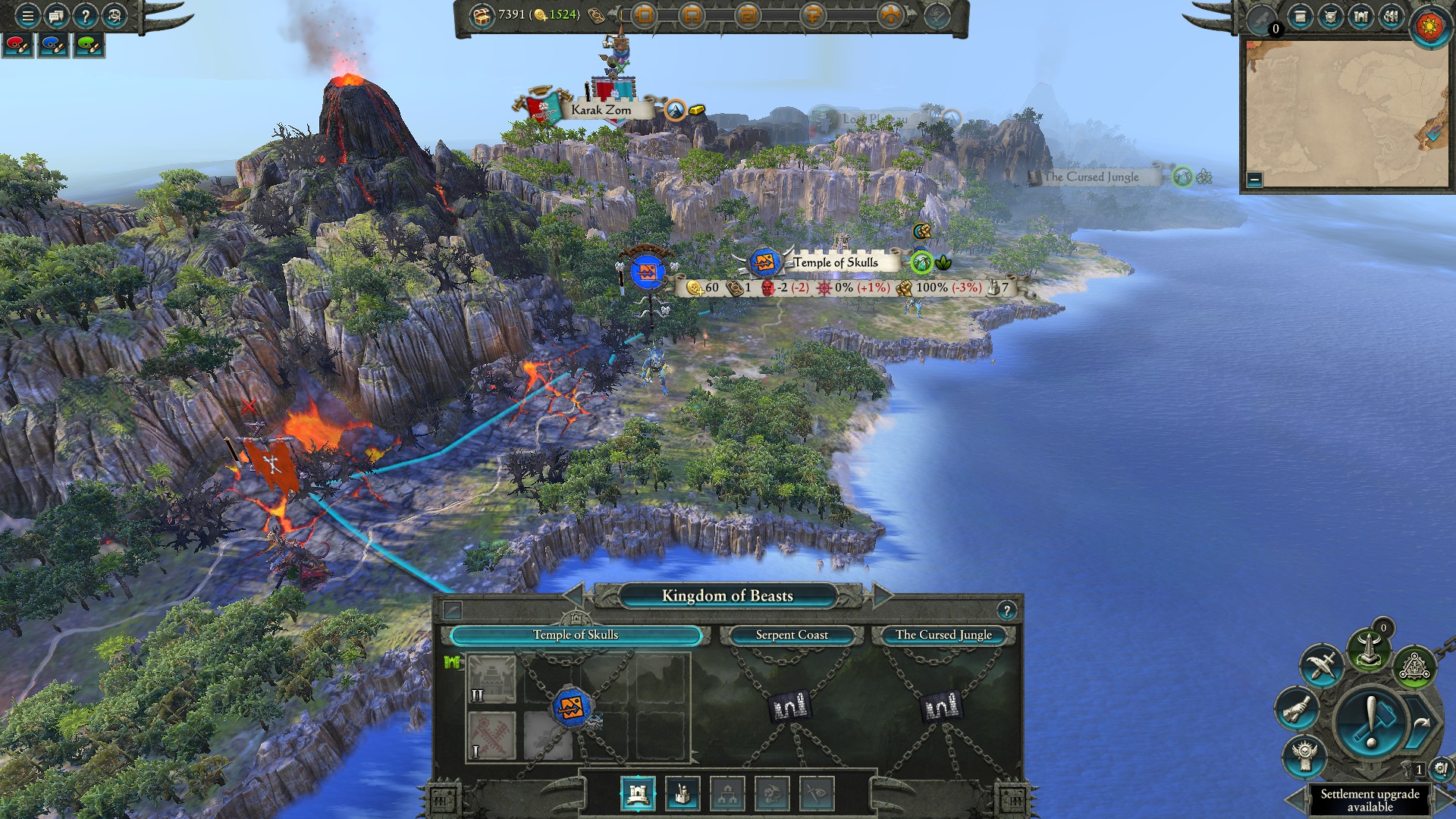Creative Assembly’s second RTS Warhammer title, Total War: WARHAMMER 2, arrived last fall, and, much like the turns you’ll take in the campaign, we’ve been taking our time with it. There are some great improvements and additions to the game, though there are still a few quirks that we hope will get worked out in the long-run.
Similar to the first game, Total War: WARHAMMER 2 combines the turn-based, city building aspects of Civilization when you’re at the campaign map with the real-time strategic action that’s a hallmark of the Total War series. While there are multiplayer options for putting together your own army and going up against human or A.I. opponents, the new "Eye of the Vortex" campaign is the biggest attraction and where you'll find the most co-op "bang for your buck."
The main objective of Total War: WARHAMMER 2's campaign is to gather up "ritual resources" from around the map and perform each of the five rituals necessary to claim the "Great Vortex" at the center of the map. So, while you'll still be marching your forces around the map and capturing cities from the other races, there's a specific purpose in doing so outside of "wipe out everyone else." There are four different races from which you can choose to play (Dark Elves, Skaven, Lizardmen, and High Elves), and each one has their own unique structures to build, units to train, and technology to research. They also have their own special mechanics, such as the Dark Elves being able to capture slaves from defeated opponents that get sent back to cities to increase overall income, or the Lizardmen’s “Geomantic Web” that links their settlements together and provides additional bonuses.

Outside of the campaign now having a set objective (control the Vortex) instead of the nebulous "kill or form an alliance with everyone" goal from Total War: WARHAMMER, the biggest changes from the original to the sequel are subtle. The first of these are the different “Rites” that can be performed once certain conditions, such as researching a particular technology or constructing a certain structure, are met. These Rites provide limited-time bonuses and have a cooldown period of several turns before they can be used again. These bonuses can swing things in your favor when you really need it, so there's some strategy involved in deciding when to "pull the trigger" on them. The other new feature is that every city now has a "habitability rating" for each race. While occupying a "habitable" city will provide no benefits, occupying an "unpleasant" or "uninhabitable" city will inflict an array of penalties like increased construction time for buildings and lower income earned from those buildings. Thus it's not always to your advantage to push into an area and take over another faction's cities. Sometimes, diplomacy and negotiating alliances is the better option, an idea that was present in the first game but never felt like a viable option. All of these differences and changes mean there have been some changes to how the campaign co-op works as well.
In the first game, you could team up with a friend to play as two different factions and work together to take out everyone else. As we’ve covered previously, if you and your buddy own both Total War: WARHAMMER games, then you can relive this co-op experience as any of the factions from either title in the “Mortal Empires” campaign. If you’re looking for something new/different, then you’ll want the “Eye of the Vortex” campaign. Unlike “Mortal Empires,” you now play together as the same faction, i.e., you’re both Dark Elves, or both Skaven. While playing as the same faction has the added benefit of placing you and your co-op buddy close to one another on the big map, there are some confusing elements to it as well.
